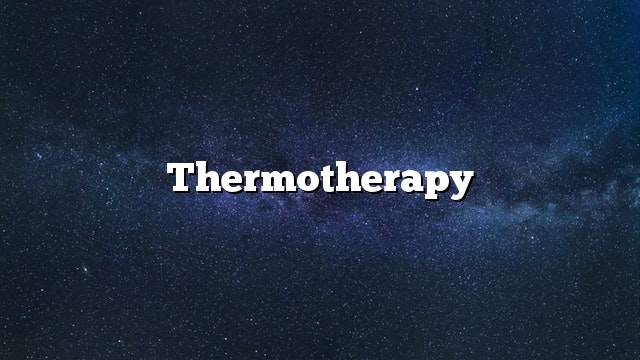Thermotherapy
Heat Therapy is defined as the use of heat in the form of hot or other bandages to relieve the pain associated with various conditions and muscle pain. Heat improves blood circulation and blood flow in the region. Which have been applied to heat, resulting in less discomfort and increased muscle flexibility.
Thermotherapy treatments
Heat therapy is designed to apply warm, not hot, heat to local areas of pain, small and large, and can be applied to the whole body, such as saunas.
- Dry Heat: Dry Heat is an easy to use method that can be applied using warm pads, saunas, and others. It is also called Conductive Heat Therapy.
- Wet temperature: Also called Convection Heat. This method is more effective than dry heat, and it takes less time to produce an equivalent result of dry heat. Moist heat is done using steamed towels Towels, Moist Heat Packs, and Hot Baths.
- Professional thermal therapy: In professional heat therapy, different techniques such as ultrasound are used to relieve the pain caused by tendonitis.
Uses of heat therapy
Thermotherapy in cases of arthritis
Thermotherapy is prescribed by doctors as a method of treatment in cases of arthritis, in order to reduce the inflammation, pain and reduce the stiffness of the joints often suffered by arthritis patients, as the heat stimulates the body’s natural ability to treat The blood spasms, blood circulation, and muscle spasm are relieved by heat. Wet heat or dry heat can be used in cases of arthritis, for example. Application of heat Before exercising for at least fifteen minutes, and then use them immediately after finishing exercise. In addition, it can be used at any other time to relieve the pain of arthritis. Attention should be paid to the temperature so that it is not too hot Do not cause burns to the skin, as the temperature must be used by the patient.
Thermotherapy in cases of low back pain
Heat therapy can be used in low back pain. There is some evidence of heat efficiency in reducing pain in these cases. It is worth noting that wet heat works better than dry heat in relieving back pain, Apply the heat for 15-20 minutes per use. A thermal envelope sold in pharmacies can be used and applied throughout the day (All-Day Heat Wrap). Electric Heating Pads can also be used, Do not use during sleep, adjust it to heat Medium or low.
Thermotherapy in neck pain cases
The treatment of heat is a procedure that can be applied at home in cases of neck pain (neck pain) although there is no strong evidence of its effectiveness in treatment, but its use does not harm, so it is possible to experiment with low or moderate amounts of heat on the neck for Ranging from fifteen to twenty minutes every two to three hours, and can be bathed in warm water instead of one of the warm compresses.
Instructions regarding the use of heat therapy
It is advisable to alert the user of heat treatment to some commandments, including the following:
- Avoid using high heat for fear of burns.
- Avoid applying localized heat for more than twenty minutes.
- Avoid using heat therapy in Infection. Heat can increase the risk of infection and increase the condition of the affected person.
- Stop using heat directly if the casualty notices swelling of the area during treatment.
- Check with the doctor if the pain worsens after the use of heat, or if the patient does not improve after a week of treatment.
Contraindications for the use of heat therapy
Despite the benefits of heat therapy in many medical cases, heat should not be used in some cases, such as Open Wounds, bruises, Bruise, swelling, The doctor should be consulted before using heat therapy if the patient has heart disease or high blood pressure. The pregnant woman should consult a physician regarding the use of certain types of heat, such as Sauna, or hot tubs (Hot Tubs). It is worth mentioning that heat treatment can cause serious damage and serious complications if used in people with health problems such as:
- Diabetes.
- Dermatitis.
- Vascular Diseases.
- Deep venous thrombosis.
- Multiple sclerosis.
